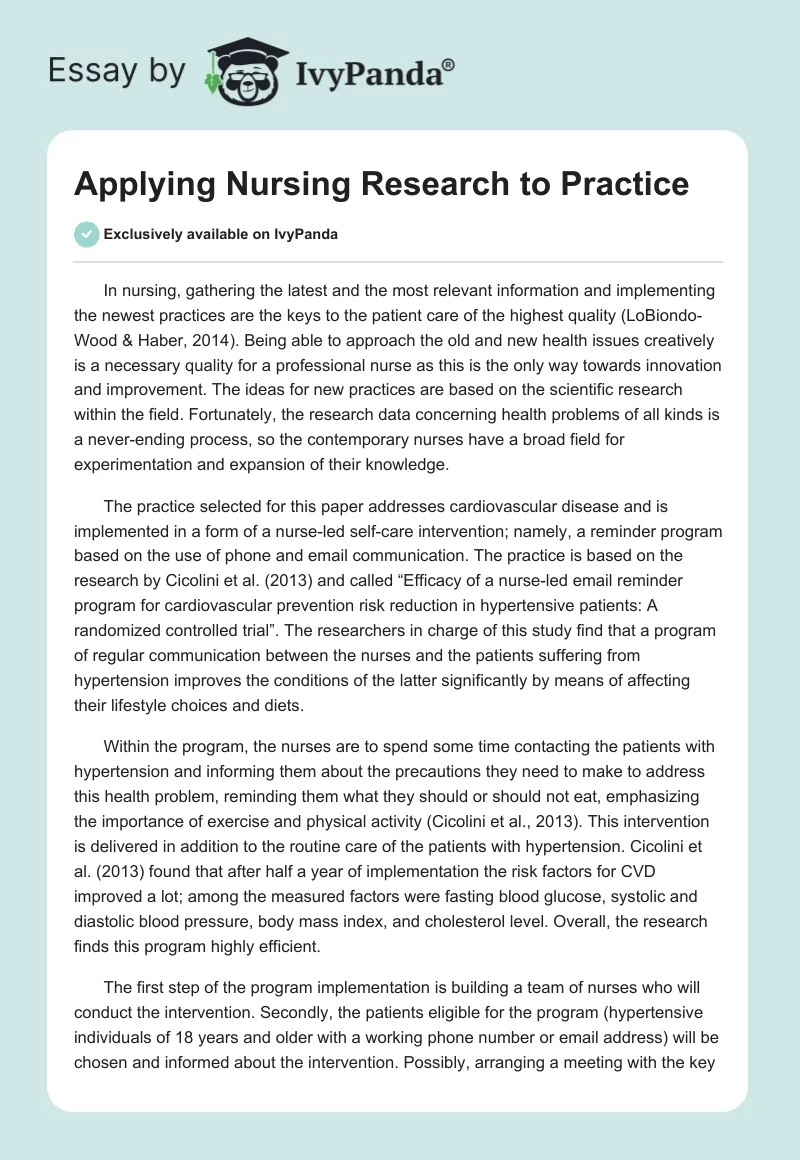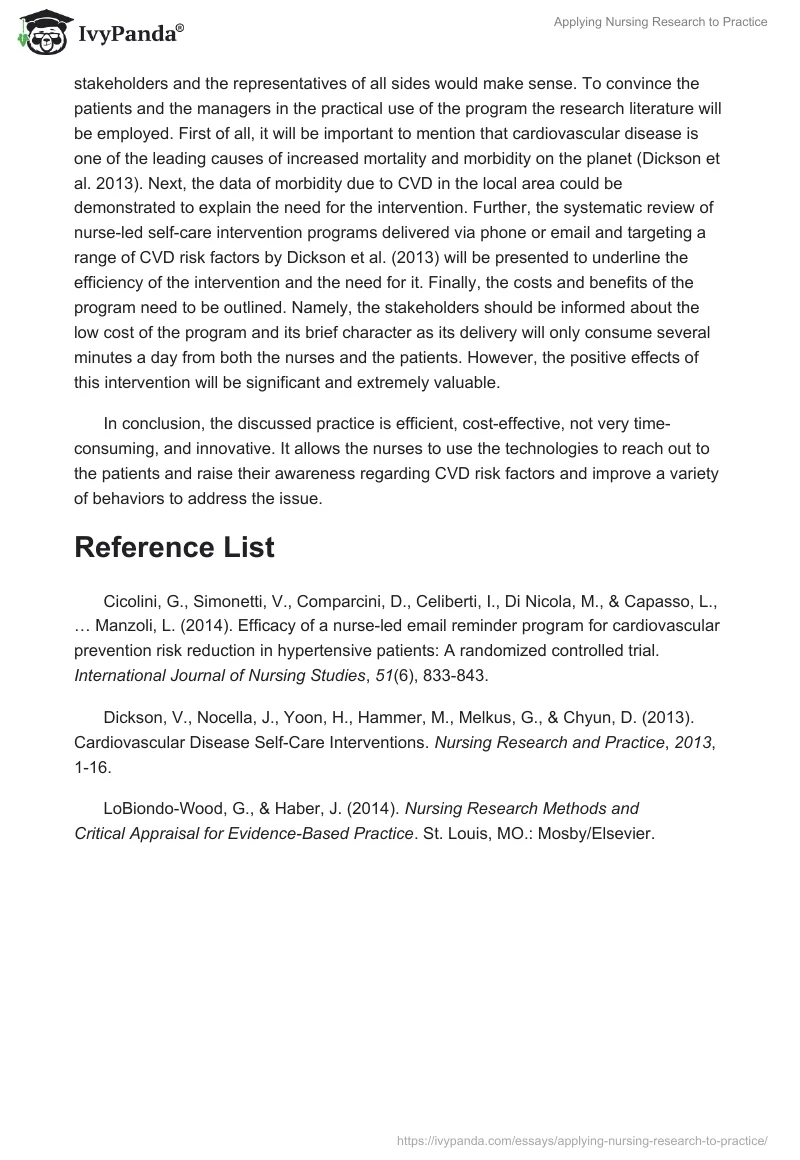In nursing, gathering the latest and the most relevant information and implementing the newest practices are the keys to the patient care of the highest quality (LoBiondo-Wood & Haber, 2014). Being able to approach the old and new health issues creatively is a necessary quality for a professional nurse as this is the only way towards innovation and improvement. The ideas for new practices are based on the scientific research within the field. Fortunately, the research data concerning health problems of all kinds is a never-ending process, so the contemporary nurses have a broad field for experimentation and expansion of their knowledge.
The practice selected for this paper addresses cardiovascular disease and is implemented in a form of a nurse-led self-care intervention; namely, a reminder program based on the use of phone and email communication. The practice is based on the research by Cicolini et al. (2013) and called “Efficacy of a nurse-led email reminder program for cardiovascular prevention risk reduction in hypertensive patients: A randomized controlled trial”. The researchers in charge of this study find that a program of regular communication between the nurses and the patients suffering from hypertension improves the conditions of the latter significantly by means of affecting their lifestyle choices and diets.
Within the program, the nurses are to spend some time contacting the patients with hypertension and informing them about the precautions they need to make to address this health problem, reminding them what they should or should not eat, emphasizing the importance of exercise and physical activity (Cicolini et al., 2013). This intervention is delivered in addition to the routine care of the patients with hypertension. Cicolini et al. (2013) found that after half a year of implementation the risk factors for CVD improved a lot; among the measured factors were fasting blood glucose, systolic and diastolic blood pressure, body mass index, and cholesterol level. Overall, the research finds this program highly efficient.
The first step of the program implementation is building a team of nurses who will conduct the intervention. Secondly, the patients eligible for the program (hypertensive individuals of 18 years and older with a working phone number or email address) will be chosen and informed about the intervention. Possibly, arranging a meeting with the key stakeholders and the representatives of all sides would make sense. To convince the patients and the managers in the practical use of the program the research literature will be employed. First of all, it will be important to mention that cardiovascular disease is one of the leading causes of increased mortality and morbidity on the planet (Dickson et al. 2013). Next, the data of morbidity due to CVD in the local area could be demonstrated to explain the need for the intervention. Further, the systematic review of nurse-led self-care intervention programs delivered via phone or email and targeting a range of CVD risk factors by Dickson et al. (2013) will be presented to underline the efficiency of the intervention and the need for it. Finally, the costs and benefits of the program need to be outlined. Namely, the stakeholders should be informed about the low cost of the program and its brief character as its delivery will only consume several minutes a day from both the nurses and the patients. However, the positive effects of this intervention will be significant and extremely valuable.
In conclusion, the discussed practice is efficient, cost-effective, not very time-consuming, and innovative. It allows the nurses to use the technologies to reach out to the patients and raise their awareness regarding CVD risk factors and improve a variety of behaviors to address the issue.
Reference List
Cicolini, G., Simonetti, V., Comparcini, D., Celiberti, I., Di Nicola, M., & Capasso, L., … Manzoli, L. (2014). Efficacy of a nurse-led email reminder program for cardiovascular prevention risk reduction in hypertensive patients: A randomized controlled trial. International Journal of Nursing Studies, 51(6), 833-843.
Dickson, V., Nocella, J., Yoon, H., Hammer, M., Melkus, G., & Chyun, D. (2013). Cardiovascular Disease Self-Care Interventions. Nursing Research and Practice, 2013, 1-16.
LoBiondo-Wood, G., & Haber, J. (2014). Nursing Research Methods and Critical Appraisal for Evidence-Based Practice. St. Louis, MO.: Mosby/Elsevier.


